The Legend of Zelda: Wind Waker for Wii U - In-Depth Review
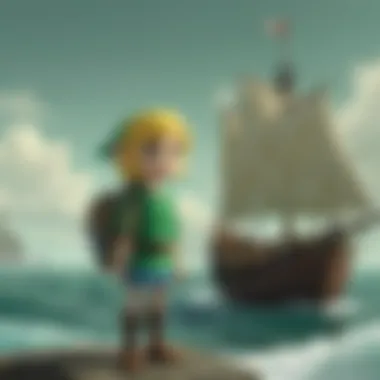
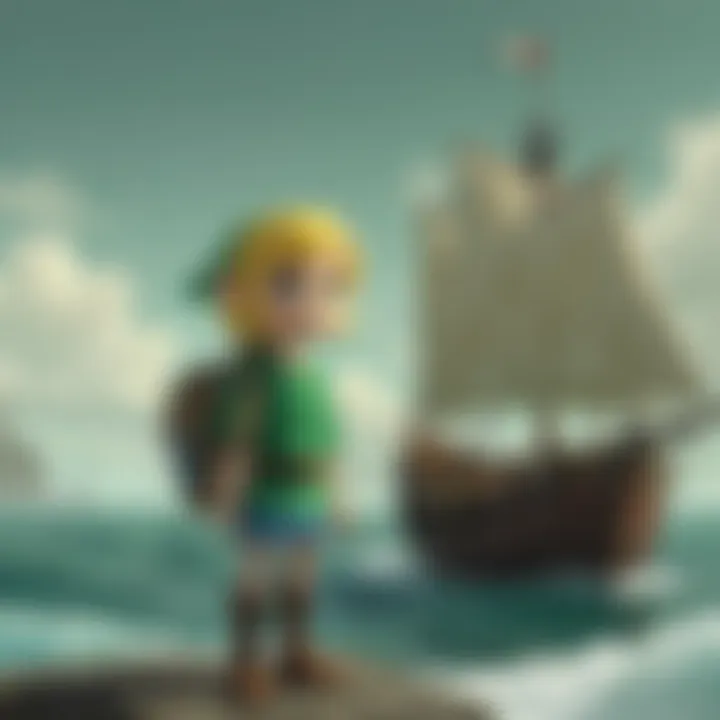
Intro
In 2003, The Legend of Zelda: Wind Waker emerged as a bold reimagining within the esteemed franchise. Initially met with mixed responses to its graphical overhaul, the game quickly carved out a niche with its vibrant world and engrossing storytelling. With the subsequent re-release on the Wii U, fans revisited this classic with enhanced features that refine gameplay and graphics.
The following sections will delve into vital aspects of Wind Waker on the Wii U, from gameplay mechanics to character interpretations. Each part will aim to unveil layers of this beloved game, highlighting the significance it holds in the expansive Zelda lineage.
Game Reviews
Gameplay Features and Mechanics
Wind Waker incorporates a distinct sailing mechanic that promotes exploration and discovery. Players navigate the expansive borders of the Great Sea, steering the boat known as the King of Red Lions. The introduction of the Gust Bellows, a tool used to manipulate sail placement, and other items widens gameplay options considerably. Enhanced controls on the Wii U turn the game into an interactive experience with HD graphical art. This modern update also speeds up menu management, ensuring quicker access to gameplay essentials.
Storyline and Quests
The narrative is integral to Wind Waker's charm. Players experience the young hero Link's expedition to rescue his sister, Aryll, from the clutches of the menacing Ganon. The richly layered story unfolds alongside multiple side quests that enhance worldbuilding. Each quest aids the player in realizing links and deeper connections among various inhabitants of Hyrule. Despite initial doubts from eager fans accustomed to prior adventures, Wind Waker proves narratives outside traditional borders can be equally compelling.
Visuals and Sound Design
Wind Waker's aesthetic utilizes cel-shaded graphics, setting it apart from earlier installments. This animation style contributes to an engaging atmosphere, providing a sense of immersion. The color palette is bright, contrasting with the game's themes of adventure and heroism. Accompanying visuals, the sound design elevates moments—specific compositions evoke feelings ranging from tranquility to peril. The music, like the beautiful Dragon Roost Island theme, stays imprinted in players' memories long after leaving the game's world.
Comparison with Previous Titles
When compared to Ocarina of Time, both games share central adventure-driven narratives but differ starkly in visual representation and gameplay mechanics. Wind Waker's ocean exploration removes the fixed landscape of previous titles. This decision adds a fresh dynamic while raising the stakes, leading to unpredictable journeys.
Character Analyses
Popular Characters Overview
Characters like Link, Zelda, and Ganondorf remain iconic across the series. In Wind Waker, Link takes on a youthful appearance, quite contrasting roles assumed in predecessors. Zelda becomes a unassuming yet crucial element of the narrative with her alter ego, Tetra.
Character Development and Backstories
Wind Waker succeeds as each character evolves fluidly throughout the gameplay. Link's growth is inherent, reflecting through his determination and maturity as the plot unfolds. Zelda's journey as Tetra provides nebulae for other themes to elaborate on issues of identity and fate.
Role in the Zelda Universe
Within the greater Zelda Universe, Wind Waker embodies transition. The game hints at future journeys, displaying an ever-evolving timeline that includes references and adjustments made to other Zelda titles.
Fan Theories and Speculations
The Zelda community has posited intriguing theories, including the geographical importance of the Great Sea and its links to the central Zelda mythos. Players speculate on timelines, particularly how Wind Waker fits among timelines, considering events developing seen well-known titles.
Opinionators posit that the Great Sea reflects the wisdom found within the Zelda franchise concerning growth—the dispersal of land mimics experiences of youth.
Lore Discussions
Mythology and Worldbuilding
Wind Waker enriches its world by exploring mythological undertones. Undoubtedly woven within, their interpretations invoke deeper reflections on resilience and hope in the face of adversity. Each island symbolizes various elements crucial for character and environmental growth.
Legendary Items and Artifacts
Legendary items such as the Master Sword or the Wind Waker baton play pivotal roles in both gameplay mechanics and the narrative itself. These artifacts provide insight into the inheritance of power, fate, and shared legacies among characters.
Link to Real-world Mythologies
Scholars often draw connections between Wind Waker and many historical mythologies—the nautical voyages correlate with tales of exploration and adventure popular across civilizations, suggesting deeper meanings in each quest.
Timeline Placement and Theories
Wind Waker occupies a unique spot in the Zelda timeline, often connected to broader narratives of maintaining balance against chaos. Its conclusion leads some fans to ponder its impact on later games—resulting in almost cult-like discussions.
Gameplay Strategies
Combat Techniques and Tips
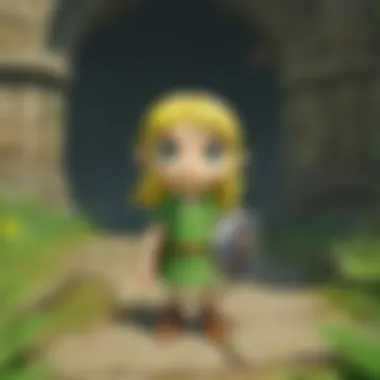
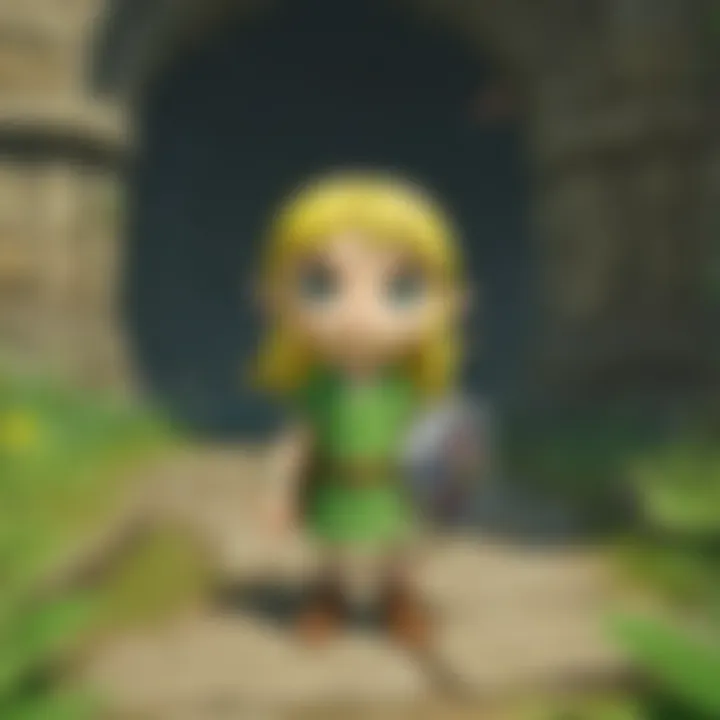
Preparation becomes essential in Wind Waker’s world as clever combat tweaks can lead to victory. Acquire bombs early for opposing battles or utilize powerful combos with Hyrulean Shield.
Puzzle Solutions and Walkthroughs
Verifying players offer solutions for more significant sections within the game, professional cheat guides can assist when needed.】 Facing formidable puzzles demands wisdom along with recall from scattered areas visited.
Collectibles and Side Quest Guides
Finding Treasure Charts and collecting special items adds to game depth, enticing players to explore hidden regions and achieve personal objectives. Completing side quests yields beneficial rewards impacting gameplay experience positively.
Boss Battles Tactics and Strategies
Boss encounters require astute application of equipment and wits. Learning diverse tactics for formidable foes ensures survival while enriching the triumphant feeling that follows each victory. Trial, error, equipped resources begins a cycle keen players learn exceptionally well.
In sum, Wind Waker persists as an engaging saga among fans. Each area merits exploration, both for textural insights and nuanced gamer experiences, contributing lasting value within lore discussions or gathering undertaken paths.
Prologue to Wind Waker
The Legend of Zelda: Wind Waker made a significant mark in the gaming industry with its distinctive approach to storytelling and design. This introduction serves to explore not just what the game represents but its everlasting impact on the Zelda franchise as a whole. By understanding the game's historical context and its path to the Wii U platform, we can grasp its relevance, not only to long-time fans but also to new players who queue up for this classic adventure.
A Historical Context
Released initially in 2002 for the Nintendo GameCube, Wind Waker brought forth a unique vision of the Zelda universe. Upon its launch, it was met with mixed reactions primarily due to its cel-shaded graphical style, which dramatically differed from previous entries in the series. While the game drew inspiration from manga art, it also aimed to evoke a sense of exploration and freedom—themes that have become integral to Zelda as a whole. The game's initial reception led to a varied audience response that ranged from criticism to unbridled enthusiasm.
As decades have passed, Wind Waker has gone through historical reassessments. Many critics have reflected on its artistry and dynamic gameplay with newfound appreciation. The backdrop of adventure set against the expansive ocean paired with compelling character dynamics has carved a niche in gaming history.
The narrative laid the foundations for future Zelda titles, solidifying its importance in understanding how a game can influence not just players, but also developers.
Transition to Wii U
With the announcement of the HD remaster for Wii U, Wind Waker presented itself to a new generation. Lauded for its enhanced visuals, notably its upscaled resolution and improved lighting effects, the transition marked not just a technological improvement but a reaffirmation of its status as a classic.
Beyond aesthetics, improvements were made to gameplay dynamics. Fast sailing and improved treasure finding were notable enhancements that assuaged some gameplay frustrations from the original version. The Wii U touchpad introduced new navigational mechanics, offering a more intuitive method for managing controls and content. These upgrades were designed to capture the essence of the original while also embracing modern gameplay expectations.
The significance of this transition extends beyond graphics and gameplay. It underscored the enduring legacy of Wind Waker as a title that continues to resonate, drawing a mix of nostalgia and intrigue from both past players and newcomers.
Art Style and Design
The art style and design in 'The Legend of Zelda: Wind Waker', particularly how it manifests on the Wii U, plays an essential role in shaping player experience. It does not merely serve as visual adornment; it deeply influences gameplay, atmosphere, and overall narrative resonance. By leveraging its unique aesthetics, the game sets itself apart from other entries in the Zelda franchise, providing both visual appeal and practical benefits to gameplay mechanics.
Cel-Shaded Visuals
Cel-shaded visuals are the cornerstone of Wind Waker's artistic identity. This technique differentiates the game significantly from more graphically realistic games. The intention here is not simply to appear cartoonish, but to create a world that feels vibrant and alive.
Unlike traditional graphics that aim for realism, cel-shading emphasizes color, contrast, and flatness, which works well with the game's youthful tone. The bold outlines and bright colors foster an immediate sense of whimsicality, enhancing the explorative journey of Link as he sails across an expansive ocean. The atmospheres shift dramatically between serene exploration and tension-laden combat, facilitated in part by the graphics.
Moreover, this visual style benefits performance as well. The Wii U is able to render these graphics smoothly while maintaining frame rates even in action-heavy sequences, thus preserving gameplay fluidity. The visual simplicity allows for detailed narrative moments without burdening the hardware.
Environmental Aesthetics
Environmental aesthetics go hand in hand with the cel-shaded design. The world of Wind Waker consists of countless islands that are distinct yet cohesive in their look and feel. Each island serves diverse functional purposes within the gameplay, all while providing a unique atmosphere that captivates players.
The careful design extends to elements such as lighting and weather conditions. For instance, certain areas may have an ethereal glow at dawn or an ominous murk during a storm. This not only enhances mood but impacts gameplay elements, advising players about the nature of approaching challenges.
Graphically, splendid textures lay the ground for higher sensory immersion, allowing players to feel as though they can touch the objects, even interactively. Using a variety of environmental cues ideally fits the themes of adventure, danger, and discovery the series is known for.
The environmental aesthetics are classified not just by their form but by their function in gameplay. Each design choice underscores the layers of interaction capable throughout the game.
In summary, the art style and design of Wind Waker are crucial components that enrich not only the visual spectacle, but gameplay engagement as well. By striking a balance between aesthetics and functionality, the game invites players on a vibrant, immersive journey detailed fully through its intriguing, often playful visual stories.
Gameplay Mechanics
Gameplay mechanics play a pivotal role in making "The Legend of Zelda: Wind Waker" on the Wii U not just a game, but an experience. Basic elements underpin the entire interaction the player has with the world of Hyrule. By analyzing core functions and evaluating innovative changes from earlier titles, one can appreciate the depth and richness of gameplay in Wind Waker.
Core Game Functions
Unlike many games in its genre, Wind Waker leans heavily on its exploration mechanics. Players navigate the vast sea, uncovering islands, treasures, and challenges along the way. The use of a sail enables free movement across the ocean, empowering discovery and adventure. Players wield a variety of tools, each with their own specific use. For instance, the Grappling Hook and the Boomerang present unique ways to interact with the environment, allowing solutions to puzzles and battle scenarios.
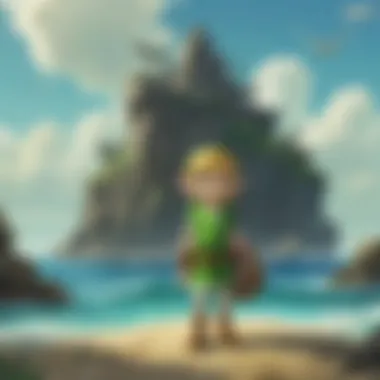
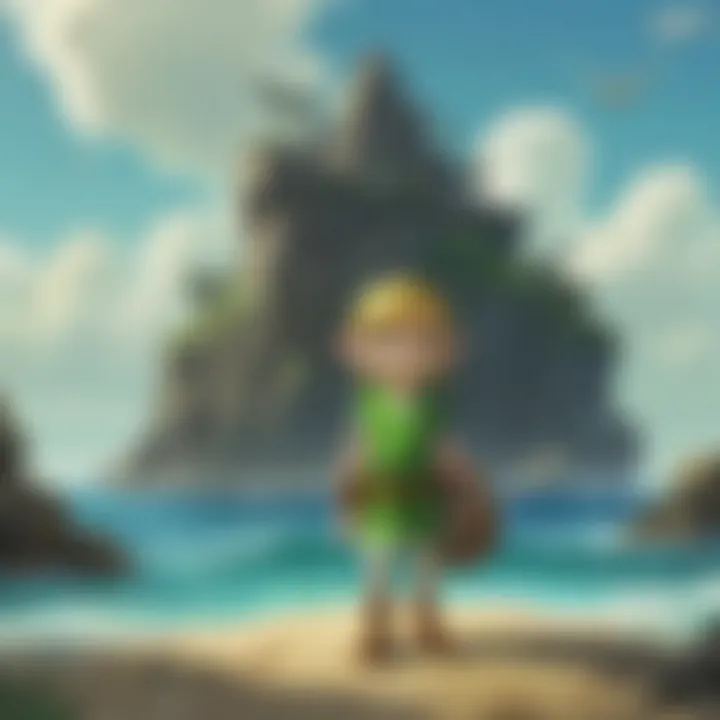
Key features that define gameplay include:
- An inventory system that encourages players to manage items strategically.
- Combat that combines timing with learning enemy patterns, essential for progressing in the story.
Wind Waker's mechanics reward exploration and practice, as players journey through temples and confront various adversaries. Finding secrets and completing side quests enhances the overall experience and contributes to character development.
Innovations Over Previous Titles
On the Wii U, Wind Waker incorporates significant innovations that distinguish it from prior Zelda entries. The use of the GamePad provides an intuitive way to navigate the map and access items. In particular, players can manage their spectrum of items with ease. Players can realistically assume responsibilities such as sailing or managing inventory without distracting from the core adventure.
Additional innovations include:
- Streamlined gameplay experience involving fast travel and improved visual interfaces.
- A more extensive use of environmental mechanics, encouraging creative solutions to puzzles.
Overall, these innovations not only modernize Wind Waker but also enable a more dynamic experience as a both an action game and an exploration endeavor.
Lastly, the shifts in combat mechanics give a fresh take on traditional structures found across the Nintendo franchise. Players count with diversified weapon functionalities that allow for varied playstyles.
"Wind Waker's clever incorporation of exploration and strategy ensures players remain captivated throughout their journey." - Game Development Institute
Narrative Structure
Understanding the narrative structure of The Legend of Zelda: Wind Waker is vital to appreciating its depth and engagement. The game aligns itself within the established Zelda universe while introducing innovative storytelling methods. Its blend of immersive lore, character development, and thematic resonance creates a compelling tapestry that invites players to explore its rich narrative.
The interconnectedness of game lore and character arcs generates a more profound experience. This is advantageous, as well-structured narratives can enhance emotional connections.
Plot Synopsis
The Legend of Zelda: Wind Waker unfolds in a maritime setting where the protagonist, Link, embarks on a quest to rescue his kidnapped sister, Aryll. As the story evolves, Link learns of a resurgent evil. The primary antagonist, Ganon, creates a narrative backdrop filled with suspense and challenges.
Key Components of the Plot:
- Setting: The world of Hyrule now resides beneath a vast ocean.
- Conflict: The threat of Ganon’s resurrection drives the gameplay.
- Resolution: Link battles through varied islands leading to ultimate confrontation with Ganon.
Narrative reveals are meticulously woven into quests and character interactions. This includes tending to side quests that not only enrich the gameplay but also provide layers to the main story. Characters add fluidity to Link's journey.
Character Arc Development
Character development takes center stage in Wind Waker. The progression of characters throughout the plot is telling and well-crafted. Link’s persona, built on heroism, is scrutinized through different lens. As players navigate his journey, they witness his growth from a naive boy to a seasoned hero.
Observations on Character Growth:
- Link evolves through personal challenges and interactions with various characters.
- Zelda is more than a damsel. Her motivations are clearer, and her involvement shapes the story.
- Antagonists like Ganondorf display complex motivations, enhancing players' understanding of their character.
In summary, the significance of character dynamics cannot be overstated. Players become invested in their destinies. This in-depth character traversal allows for varied gameplay outcomes, making every choice meaningful. Link's journey across the ocean of both water and emotion encapsulates the essence of the game's narrative structure.
“In Wind Waker, the emotional depth enhances the player connection greatly.”
Character Analysis
Character Analysis is vital to understanding 'The Legend of Zelda: Wind Waker' in a deeper sense. Through examining the characters, players can grasp the subtleties of their motivations and relationships within the narrative. In a game as rich as Wind Waker, where themes of growth, sacrifice, and courage are evident, a thorough analysis unveils special meaning behind the character interactions and decisions made throughout the game.
Link's Persona
Link serves as the protagonist in Wind Waker. His persona is effectively a vessel through which players engage with the game world. Unlike many other heroes in the gaming realm, Link does not possess any inherent power or status. Thus, he represents the common person's journey, reflecting growth and resilience. His character evokes the need for courage, as he willingly steps into threats that are much larger than himself. He shows determination in the face of overwhelming odds. Moreover, Link's characteristics are largely shaped by his surroundings and the people he meets during his quest. Every triumph and setback layers depth into his character, a journey of identity rather than sheer ambition.
Zelda's Role
Zelda is not merely a context for Link's challenges but plays a crucial part in the story's fabric. In Wind Waker, her character stands out due to her transformation and agency, moving beyond typical portrayals in video games. Disguised as
Exploration and World Design
Exploration and world design are central to the experience of playing 'The Legend of Zelda: Wind Waker' on the Wii U. The vast and vibrant oceanic world invites players to engage actively with their environment. It features an intricately designed open-world that not only enhances gameplay but also provides a rich backdrop for storytelling. This article examines various aspects of exploration, emphasizing its significance for the game's overall impact.
Open-World Concepts
The open-world concept in Wind Waker allows players to traverse the expansive seas freely. This openness fosters a sense of adventure, pushing players to dive into unexplored waters and unveil hidden treasures across numerous islands. Such freedom stands in contrast to the rigid structures often found in linear gameplay.
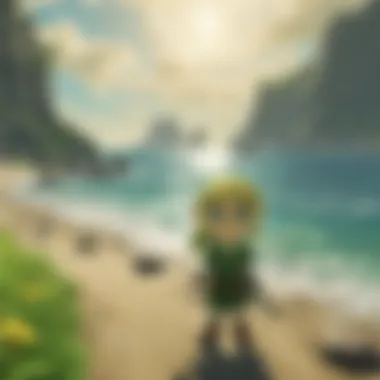

- Players command their ship, the King of Red Lions, sailing between islands.
- Each isle contains unique challenges, quests, and opportunities for discovery.
- The fluidity of ocean travel highlights both the beauty and the risk of exploration.
Benefit arises from the game's emphasis on player choice. Players can decide their route, engage in numerous mini-adventures, or solve intricate puzzles, thus creating a customizable experience. Different biomes ranging from serene grasslands to rocky mountains exemplify Nintendo’s effort in engaging players by varying environmental features.
Island Discoveries
Island discoveries constitute a substantial aspect of oceanic exploration, each isle offering distinct experiences that invite curiosity and investigation. From bustling markets to eerie ruins, each location enriches the player's knowledge of the Wind Waker universe. Islands also serve functional purposes, such as enabling progression in the plot or providing items and upgrades essential for overall advancements.
Notably, players find a rich tapestry of secrets, treasures, and lore embedded in their findings. As gameplay progresses, players often must engage with local characters to unlock insights or gather quests, further enriching gameplay.
"The freedom of exploration rewards players who take time to delve into their surroundings, uncovering stories beyond the main quest."
To summarize, exploration is not simply an element of Wind Waker; it is a cohesive force driving player engagement and infusing the experience with wonder and discovery. The opportunities for island discoveries expand the narrative possibilities, allowing for deeper immersion into the loreful world established by Shigeru Miyamoto and his team.
Soundtrack and Audio
The sound design in The Legend of Zelda: Wind Waker plays a crucial role in the overall experience. Music and audio not only complement the visuals but also enhance the emotional and atmospheric depth of the game. Players often find that the soundtrack significantly adds to their journey across the vast ocean and numerous islands.
Musical Composition
The composition of the musical score in Wind Waker stands out due to its inclusion of diverse instruments and orchestration. Koji Kondo, known for his work on earlier Zelda titles, has crafted a unique auditory experience that marries classical influences with marine-themed motifs. The score dynamically shifts according to the gameplay, adapting to various seascapes and scenarios. Key pieces include memorable themes associated with main characters, locations, and specific events. The use of motifs allows specific melodies to continuously resonate through different parts of the game, providing a sense of cohesion.
Additionally, the variations in tempo and style reflect Link's evolving adventure, conveying excitement, nostalgia, and tension. Such sound design invites players deeper into the narrative.
Impact on Atmosphere
The impact of the soundtrack on the atmosphere cannot be overlooked. Music is often the unsung hero of player immersion, and in the case of Wind Waker, it certainly enhances emotional connections. For instance:
- Through soft melodies, scenes of exploration evoke wonder and serenity.
- Upbeat tunes forage a sense of adventure and joy while traversing the waves.
- Tense orchestral compositions accompany confrontations with enemies, elevating the stakes in dramatic moments.
This attentive crafting exemplifies how the audio design shapes player experiences. Sound effects also contribute, with the ambient noises of the island landscapes and the ocean water adding another layer of realism. Comparatively, music is central in crafting moments of both silence and action, seamlessly moving between quiet reflection and active engagement. The expansive Wind Waker world breathes life through its auditory landscape.
“Music can evoke feelings that words alone cannot.” - Unknown
In essence, both the musical composition and overall audio design heighten Wind Waker's mystical narrative underneath its vivid graphical presentation. It solidifies the Wii U iteration as a key chapter in the storied franchise.
Community and Legacy
The legacy of The Legend of Zelda: Wind Waker extends far beyond its original launch. It has carved a unique niche within the Zelda community, impacting both fans and the gaming industry broadly. The section highlights the dual importance of community and legacy. Community captures fan sentiment and engagement, while legacy illustrates the influence Wind Waker has on gaming as a whole.
Fan Reception Over Time
Upon its initial release for the Nintendo GameCube, Wind Waker faced polarizing reactions. Much discussion centered around the game’s cel-shaded art style, which, while visually charming, led some fans to develop initial biases. Over time, perceptions have shifted dramatically. Factors that contributed to the change include retrospective reviews, advancements in technology, and personal reflections by players.
Today, many fans regard the whimsical visuals and expansive oceans positively. Given its bold design choice, it remains celebrated for pushing conventional boundaries in game aesthetics.
According to a survey of forums, players now frequently laude Wind Waker as one of the top entries in the Zelda series, citing its engaging story and innovative mechanics. Retrospective reviews have also enhanced its standing, bringing more casual players into the fold.
"Wind Waker showed that visual choices could define a narrative experience in gaming.
It’s not just gameplay, it's artistry."
Influence on Future Titles
The innovations seen in Wind Waker established benchmarks for future Zelda games. Many elements that fans appreciate significantly shaped subsequent titles. The open-world structure, mingled with adventure and exploration, served as an inspiration for future installments, especially Breath of the Wild.
Key aspects influenced by Wind Waker are:
- Environmental storytelling: The vibrant islands tell players stories through design, a trait mirrored in later games.
- Freedom of exploration: Players were encouraged to roam across vast seas, an inspiration that continued into open-world structure.
- Adaptive gameplay mechanics: Ideas that debuted in this title, like traversing land and sea with various items and skills, enhanced engaging interactions.
Overall, the heartfelt connection fans maintain with Wind Waker is synonymous with several other modern gaming crafts, cementing its pivotal role in content development and gameplay experience.
Culmination
Reflection on Wind Waker's Significance
In examining the impacts of The Legend of Zelda: Wind Waker on the Wii U, it is crucial to recognize its multidimensional significance within the franchise itself. The game stands as a testament to Nintendo’s ability to innovate while staying true to their roots. With its unique cel-shaded art style, which offers a stark contrast to more photorealistic approaches, the visuals usher a fresh aesthetic that resonates with both new and seasoned players. This vibrant approach not only enhanced the game’s appeal but also positioned it as a visceral experience, generating engageening atmosphere and immersion.
Moreover, the gameplay mechanics revitalized expectations on exploration and narrative pacing in video games. Wind Waker embraces an open-world concept, compelling players to traverse massive oceans in search of uncharted islands. It's this strong emphasis on exploration that allows players to immerse deeper in the world of Hyrule, leading to video game narrative style evolution.
The character development is another noteworthy aspect. Link's growth is evident from his youthful spirit to a more mature, hero figure interacting with a variety of well-crafted characters, including the strong and multi-dimensional Princess Zelda. As they confront different trials together, the duality of their adventure prompts engaging themes of courage, adventure, and personal growth.
Additionally, fan reception memories solidify Wind Waker's regard as not merely a beloved title but rather a pivotal chapter in Zelda's legacy. The way Wind Waker connects today’s youth to the earlier Zelda experiences indicates its lasting impression on popular culture and gaming history. Understanding the importance of Wind Waker serves a dual purpose: it provides historical context while paving the way for appreciation of future Zelda installments.







